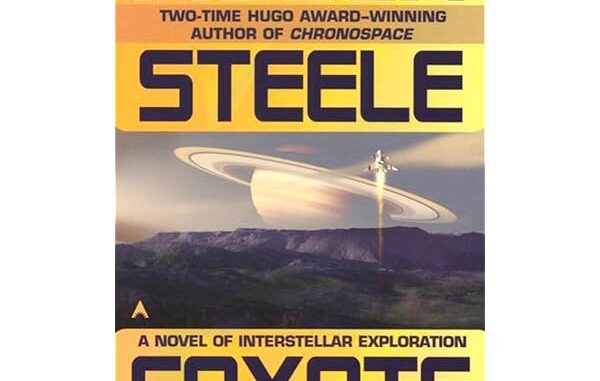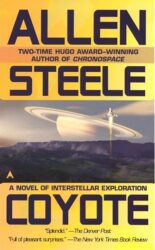
Where America Might Go Next Part 2.
 Allen Steele’s ‘Coyote,’ published in 2002, marks the beginning of one of the best science fiction series of the last 25 years. It is 2070, and The United Republic of America has come under the rule of an authoritarian conservative new Christian Right regime controlled by The Liberty Party. ‘Coyote’ originated as a series of interconnected short stories published in Asimov’s Science Fiction magazine over the previous few years, which Steele later wove into a cohesive narrative.
Allen Steele’s ‘Coyote,’ published in 2002, marks the beginning of one of the best science fiction series of the last 25 years. It is 2070, and The United Republic of America has come under the rule of an authoritarian conservative new Christian Right regime controlled by The Liberty Party. ‘Coyote’ originated as a series of interconnected short stories published in Asimov’s Science Fiction magazine over the previous few years, which Steele later wove into a cohesive narrative.
The science is solid, with the Exoplanets around 47 Ursae Majoris, the destination of the starship Alabama, being amongst the first discovered in the 1990s. The Starship has been built as a vanity project by the Liberty Party, almost bankrupting the economy in the process. The science behind the ship and its journey owes a lot to Ben Bova’s essay ‘Slowboat To The Stars’.
Part One focuses on the hijacking of the Alabama and the escape from Earth of a group of dissident intellectuals (D.I.s) led by the ship’s captain, Robert Lee. This section reads very much like a political thriller. The will they or won’t they get away with it is intriguing, but the key elements are the early part set around the Liberty Bell and Independence Hall in Philadelphia. There are some very prescient aspects to this part. You can hear the current US president in URA, President Conroy, and the language used about the D.I.s has the ring of familiarity about it. I wonder what Steele thinks of this.
The second part serves mainly to set up themes for the later part of this book and its sequels and details the story of a crewman awoken from hibernation too soon and spending 30 years alone on the ship. Part Three chronicles the initial settlement and exploration of Coyote by the colonists. Steele is on record as saying that he was rewriting the story of the early days of the American frontier. The title ‘Coyote’ alludes to a trickster figure in Native American mythology, and the story strongly echoes the narrative of American pioneers seeking freedom and a new life in the West. The colonists face similar hardships, including adapting to a harsh environment, establishing a new society, and dealing with internal conflicts. Later in the book, they shift to being an analogy for the Native Americans. In the 200 years that have passed since they began their journey, a new authoritarian regime has arisen based on “Social Collectivism,” which seems to have developed out of Cuba’s version of communism.
The catalyst for the journey to Coyote was the desire to escape from an authoritarian regime on Earth. Exploring the value of individual rights and the dangers of a repressive government is a key theme, and while he doesn’t dig deeply into Social Collectivism until a later book, the politics are an interesting subplot here. The conflict between the newcomers and the original colonists reflects much of the extermination of the Native Americans, with some differences which I won’t spoil here.
Coyote is often praised for the quality of storytelling, characterisation, and the blend of classic science fiction with socio-political themes. Steele’s writing style is generally straightforward and accessible, and if you think you don’t like science fiction, it may be a safe place to start. He prioritises character and plot, providing enough scientific detail to make the premise believable without bogging the reader down in exposition, although you do have to concentrate to get past some of the foggier aspects of long-duration spaceflight. The subsequent four books in the series advance the story and keep the narrative focused on the political aspects, as well as building on the themes of personal growth, resilience and adaptability, which are very much part of the American way. I’ve read the series through again while writing this and can only recommend it as the best of modern speculative fiction.
Could the US become the URA or even the pseudo-communist Western Hemisphere Union? Given that this was written 25 years ago, and the right names he has to conjure with to name things after are Jesse Helms and George W. Bush, who all seem a bit tame now, the answer is clearly yes, yes it could…


